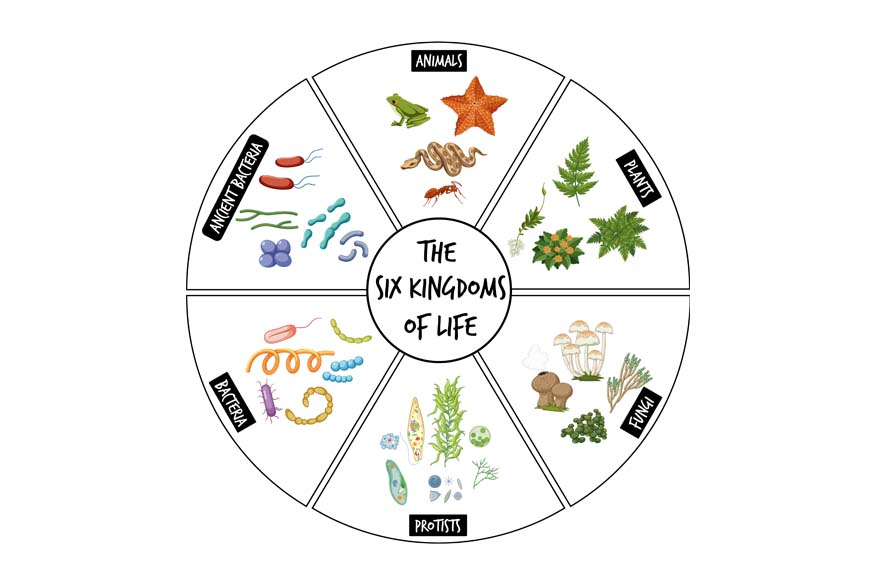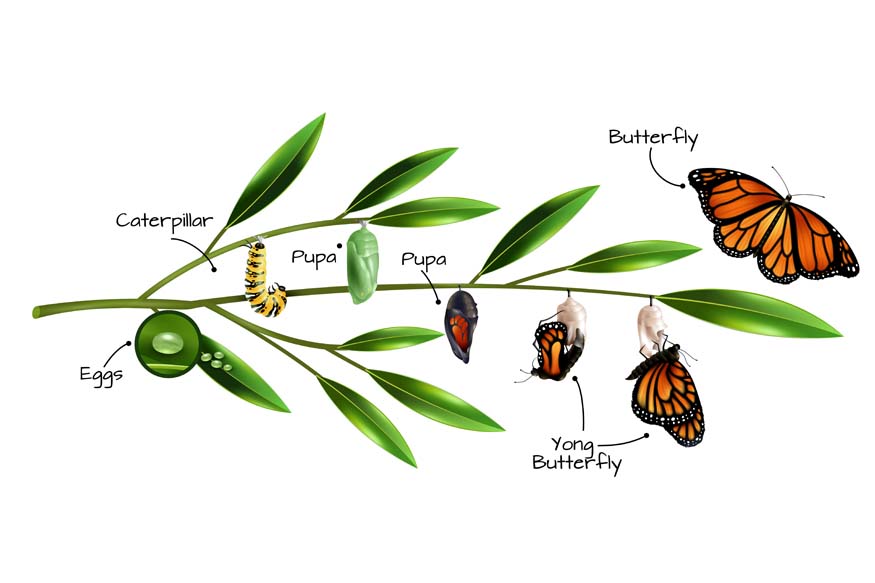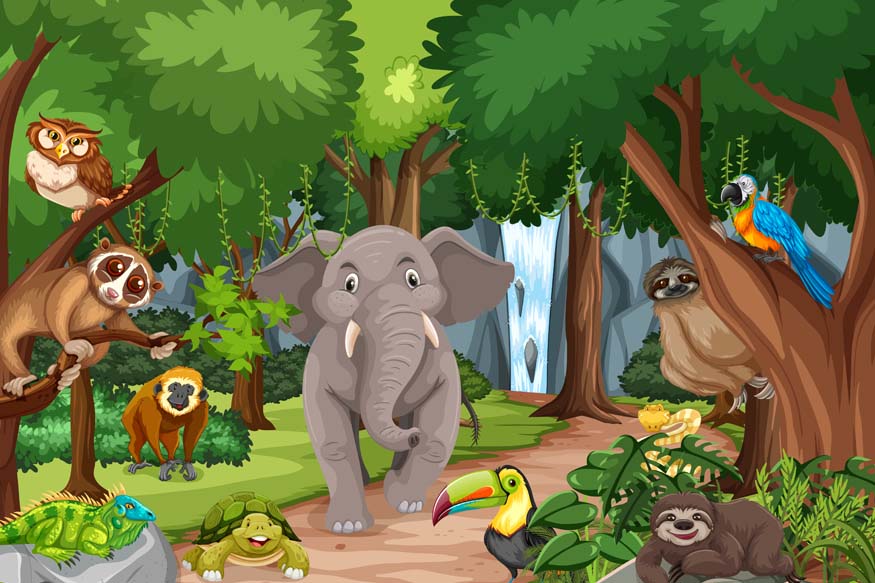An ecosystem is the basic functional unit of the environment where living (plants, animals, microorganisms) and nonliving components (soil, land, air, water, dust) interact. These interactions are essential for maintaining life on Earth.
The ecosystem is the fundamental unit of ecology studies. It focuses on how organisms live together, interact, and how energy flows through the ecosystem. It also examines relationships among organisms, whether beneficial or harmful, to sustain life.
Ecosystems can vary in size, influenced by available abiotic components. For instance, polar ecosystems have less flora and fauna compared to tropical forests due to extreme climates. Only organisms adapted to these conditions form the ecosystem. Collectively, various ecosystems make up the biosphere.
Components of an ecosystem
An ecosystem consists of biotic and abiotic components: biotic components include plants, animals, and microorganisms, while abiotic components encompass soil, water, air, and minerals. These elements interact to form a balanced system.
Biotic Components
The living parts of an ecosystem are the biotic components. They can be further classified into producers, consumers, and decomposers.
- Producers: These are the organisms in the ecosystem that generate food and energy using sunlight, oxygen, and other abiotic components. The main producers of the ecosystem are plants.
- Consumers: These organisms obtain their nutrition from the food produced by the producers. Consumers are further classified into different levels:
- Primary Consumers: These organisms feed directly on producers. They are herbivores, such as deer, rabbits, cows, buffaloes, and giraffes.
- Secondary Consumers: These organisms feed on primary consumers for their nutrition. They include carnivores and omnivores, such as crows, dogs, cats, and snakes.
- Tertiary Consumers: These organisms feed on secondary consumers. They are solely carnivores and prey on other animals. Examples include lions, tigers, and cheetahs.
- Quaternary Consumers: These organisms feed on tertiary consumers for their nutrition. An example is an eagle, which may consume a snake that has eaten a frog that has eaten a fly.
- Decomposers: These organisms break down dead organic matter and recycle nutrients back into the soil. Examples are fungi and bacteria.
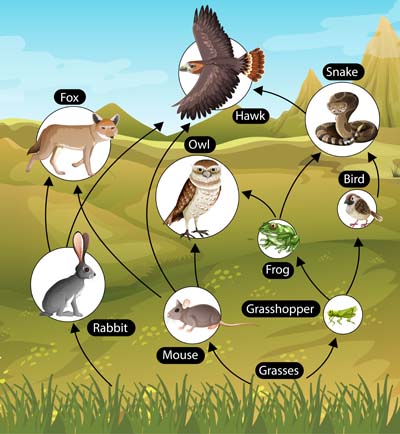
Abiotic Components
The nonliving parts of an ecosystem are the abiotic components. They include:
- Soil: Provides nutrients and a medium for plant growth.
- Water: Essential for all living organisms and plays a key role in metabolic processes.
- Air: Supplies oxygen for respiration and carbon dioxide for photosynthesis.
- Temperature: Affects the metabolic rates and distribution of organisms.
- Minerals: Provide essential nutrients for living organisms.
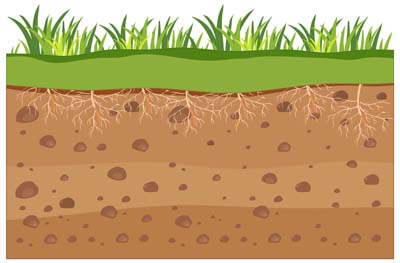
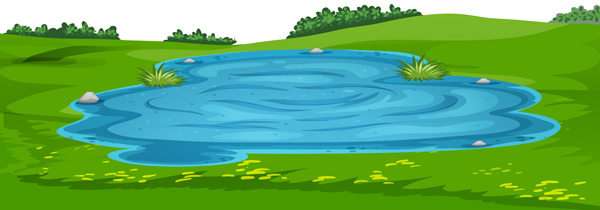
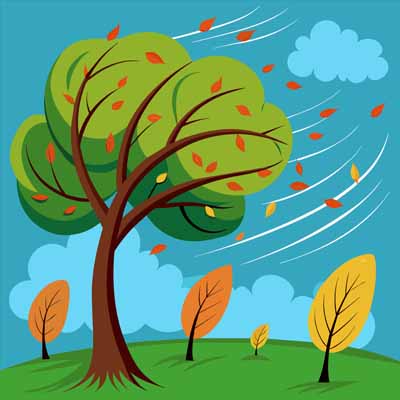
Light: Necessary for photosynthesis and influences the behaviour and activities of organisms.
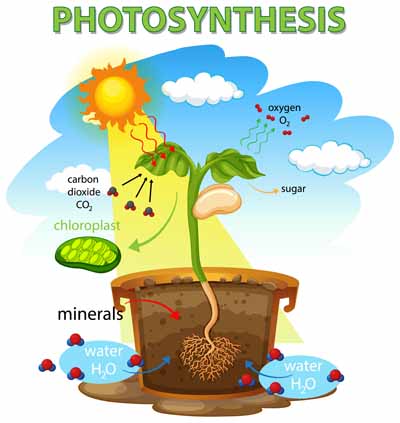
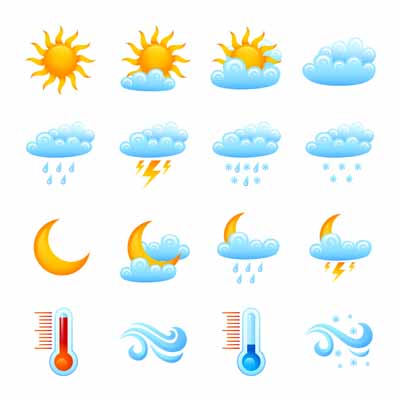
Types of Ecosystem
Ecosystems are classified into different types based on their region or the environment, such as land or water. They can also be grouped based on the amount of energy the ecosystem consumes. The basic classifications of ecosystems are:
- Terrestrial Ecosystem: These ecosystems are land-based and include various types such as forests, grasslands, deserts, and tundra. Types of terrestrial ecosystems are:
- Forest Ecosystem: These ecosystems are densely packed with various flora and fauna, boasting the highest number of organisms per square kilometre. Conservation of forest ecosystems is crucial, as they house many rare species and supply most of the world’s oxygen.
- Desert Ecosystem: Defined by receiving less than 25cm of rainfall annually, deserts have extreme climates. Despite harsh temperatures, some organisms, like camels, rattlesnakes, and cacti, have adapted to survive with minimal water by modifying their leaves and stems.
- Mountain Ecosystem: High-altitude regions above sea level with scattered vegetation, mountain ecosystems experience extreme climates. Animals here, like those with thick fur, have adapted to survive the cold conditions.
- Grassland Ecosystem: Characterised by shrubs, herbs, and few trees, grassland ecosystems are less dense than forests. These ecosystems host grazing animals, insectivores, and herbivores, and experience moderate temperatures. They are categorised into tropical grasslands (savannas), which have seasonal dryness and various predators and grazers, and temperate grasslands (prairies), which lack large shrubs and trees.
- Aquatic Ecosystem: These ecosystems are water-based and include freshwater ecosystems like rivers, lakes, and ponds, as well as marine ecosystems such as oceans, coral reefs, and estuaries. The two types of aquatic ecosystems are:
- Marine Ecosystem: This ecosystem includes all the oceans and seas, covering about 71% of the Earth’s surface. Approximately 97% of the Earth’s water is found in marine ecosystems. Marine life is incredibly diverse, with species such as sharks, whales, dolphins, seals, and walruses inhabiting these waters.
- Freshwater Ecosystem: This ecosystem comprises rivers, lakes, ponds, and other bodies of water that do not contain salt. Freshwater ecosystems account for 0.8% of the Earth’s water and 0.009% of the total water present on Earth.
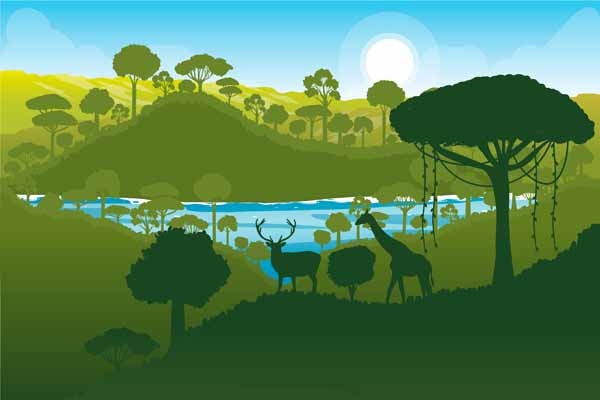
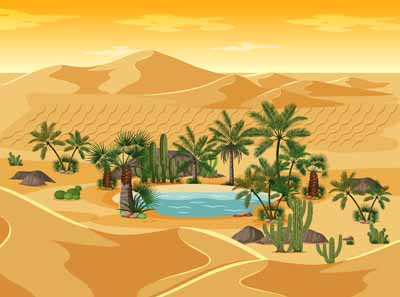
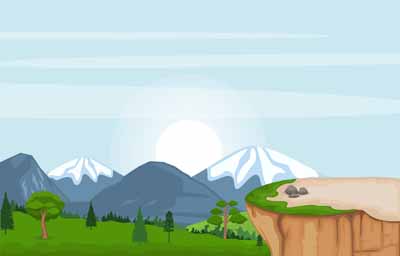
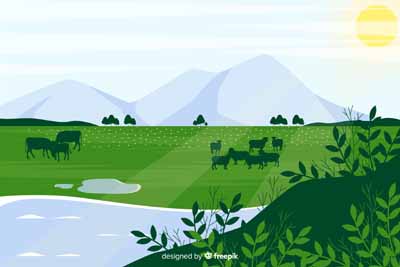
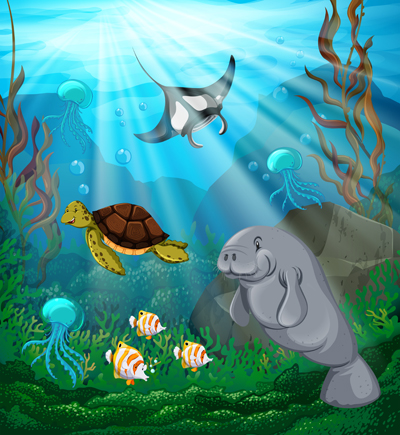
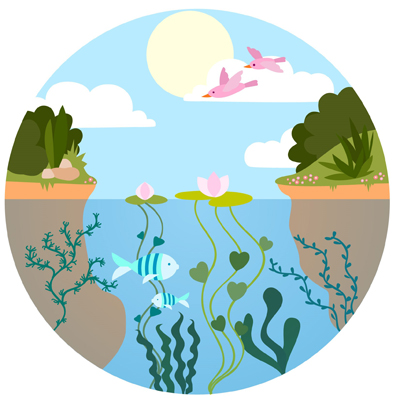
Functions of Ecosystem
The primary function of any ecosystem is the exchange of energy from one life form to another, which eventually runs in a circle and sustains the entire life of the planet. Without the ecosystems maintaining balance, there would not have been any life forms existing on Earth.
Ecosystems are complex and dynamic units where living and nonliving components interact to sustain life. Understanding and preserving ecosystems is crucial for maintaining environmental balance and ensuring the well-being of all living organisms. By recognising the importance of ecosystems and adopting sustainable practices, we can protect and nurture the natural world for future generations.
At Center Point School, we emphasise the importance of understanding ecosystems and their conservation. Our curriculum includes hands-on learning experiences that highlight the role of ecosystems in our environment. Through education and awareness, we aim to inspire the next generation to become stewards of the Earth, dedicated to preserving its diverse and delicate balance. By fostering a sense of responsibility and respect for nature, we hope to ensure a sustainable future for all.

